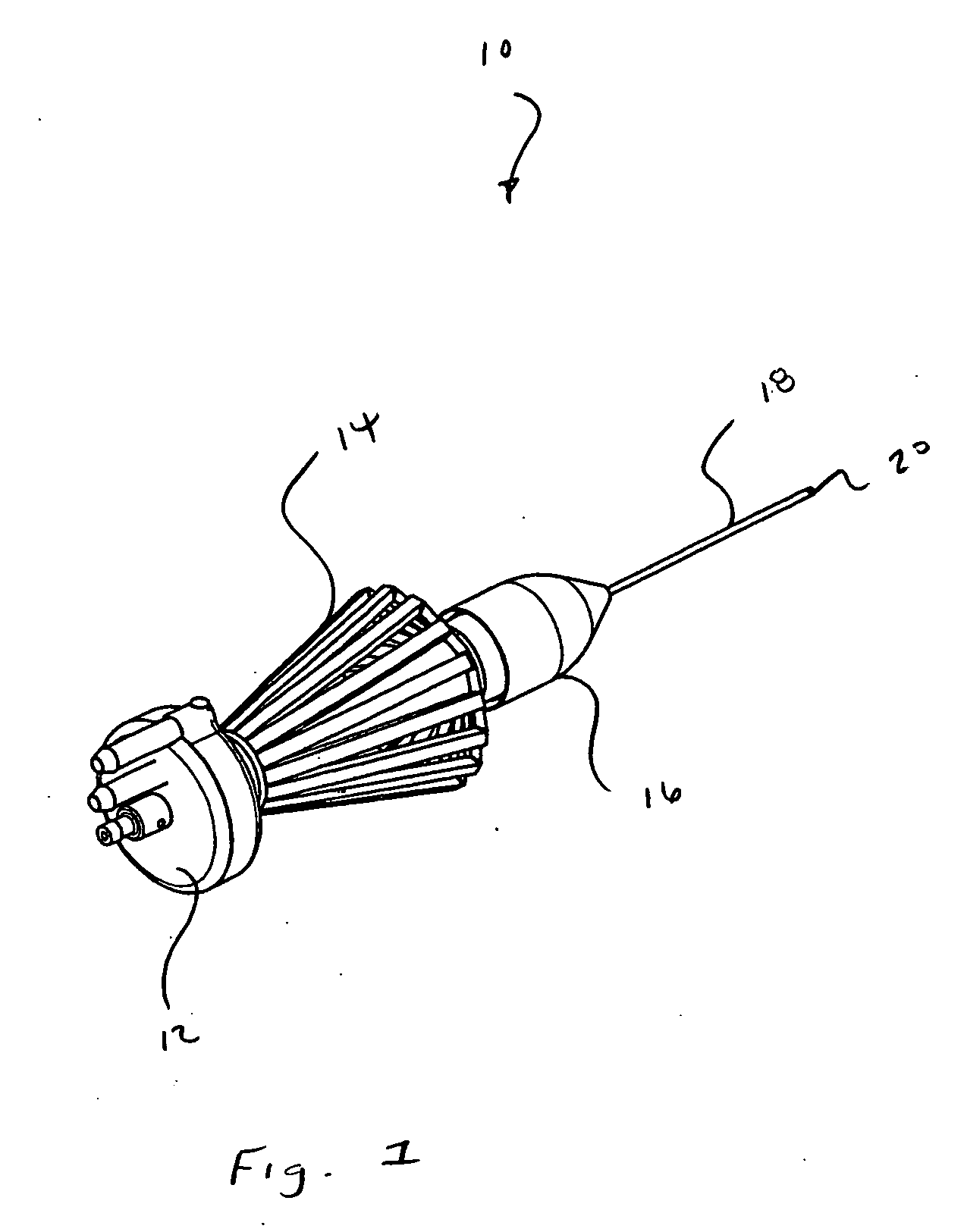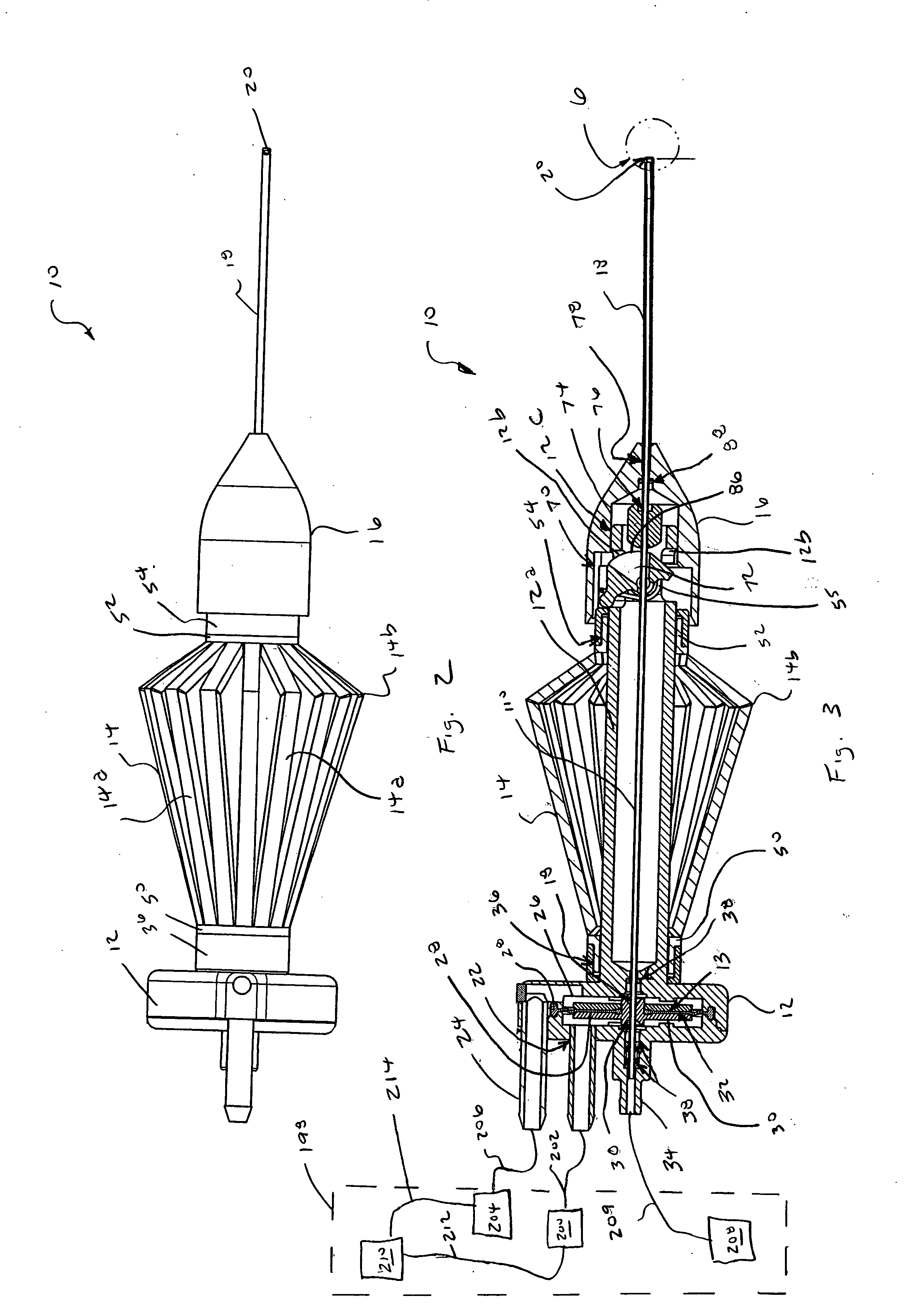Microsurgical instrument
a micro-screw and instrument technology, applied in the field of micro-surgical instruments, can solve the problems of large peak to peak fluctuation of intraocular pressure within the eye, unwanted turbulence of vitreous and retinal tissues, and the use of probes to perform mor
- Summary
- Abstract
- Description
- Claims
- Application Information
AI Technical Summary
Problems solved by technology
Method used
Image
Examples
Embodiment Construction
[0019] The preferred embodiments of the present invention and their advantages are best understood by referring to FIGS. 1 through 6 of the drawings, like numerals being used for like and corresponding parts of the various drawings.
[0020] Microsurgical instrument 10 generally includes a base 12, an actuating handle 14, a nose member 16, and a cutting member 18 having a distal tip 20. As shown in the Figures, microsurgical instrument 10 is a vitrectomy probe. However, microsurgical instrument 10 may be any microsurgical cutting, aspiration, or infusion probe.
[0021] Base 12 includes an actuating mechanism 13 for actuating a tubular inner cutting member 110 of cutting member 18 in a reciprocating manner. Actuating mechanism 13 preferably includes a first pneumatic port 22, a second pneumatic port 24, a diaphragm chamber 26, a flexible diaphragm 28, and a rigid center support 30. Flexible diaphragm 28 is frictionally coupled to center support 30 and base 12. Base 12 further includes a...
PUM
 Login to View More
Login to View More Abstract
Description
Claims
Application Information
 Login to View More
Login to View More - Generate Ideas
- Intellectual Property
- Life Sciences
- Materials
- Tech Scout
- Unparalleled Data Quality
- Higher Quality Content
- 60% Fewer Hallucinations
Browse by: Latest US Patents, China's latest patents, Technical Efficacy Thesaurus, Application Domain, Technology Topic, Popular Technical Reports.
© 2025 PatSnap. All rights reserved.Legal|Privacy policy|Modern Slavery Act Transparency Statement|Sitemap|About US| Contact US: help@patsnap.com



